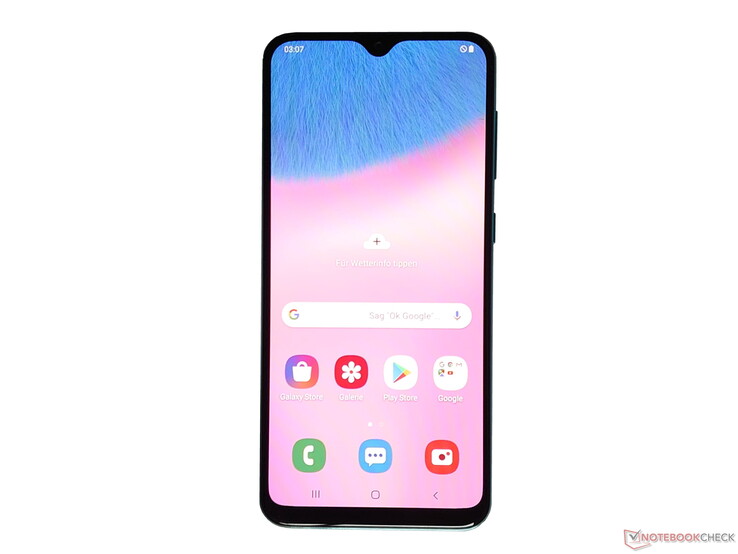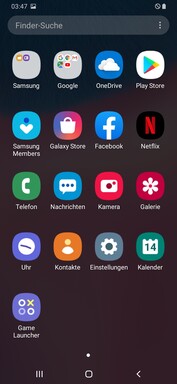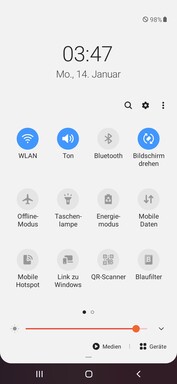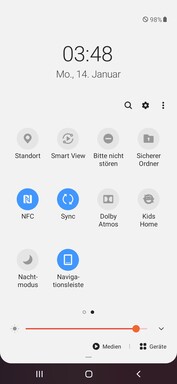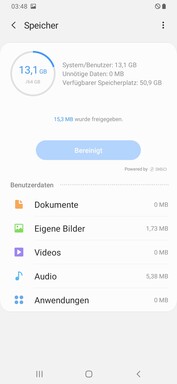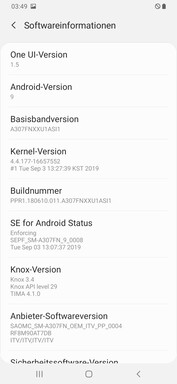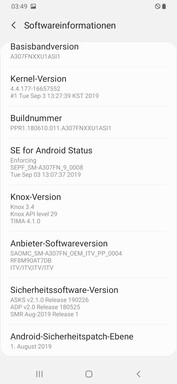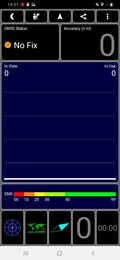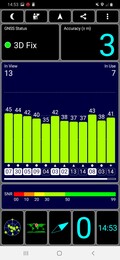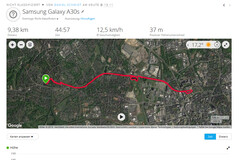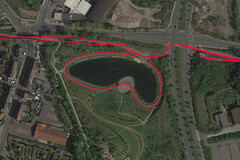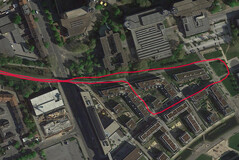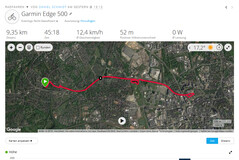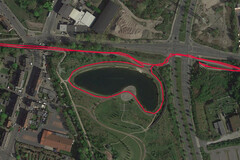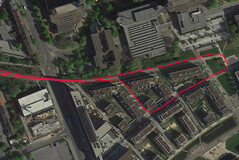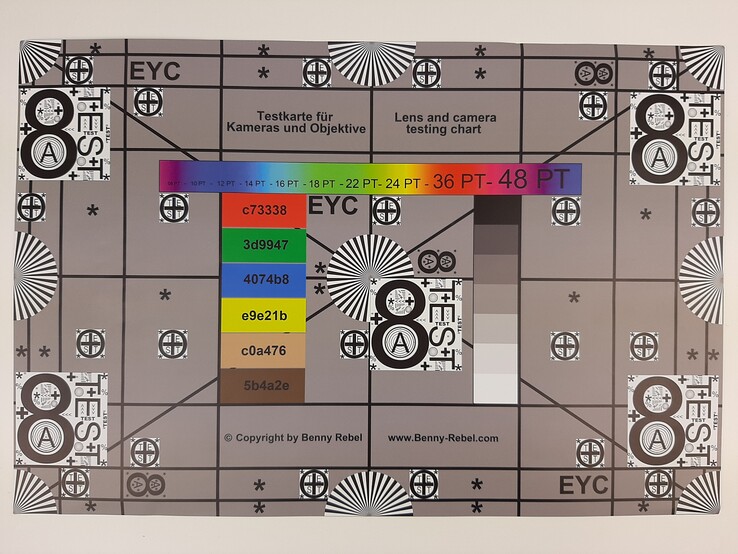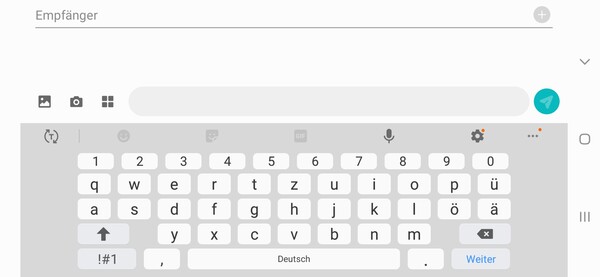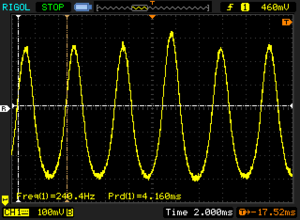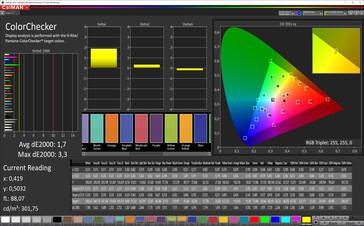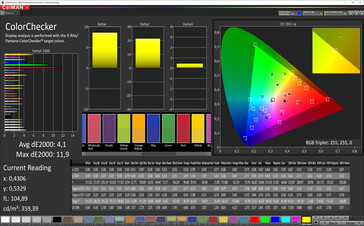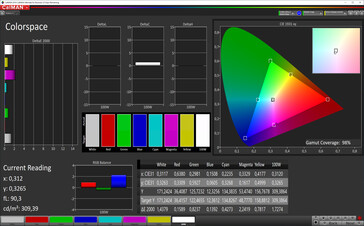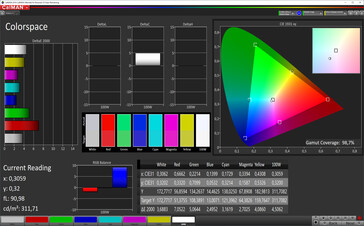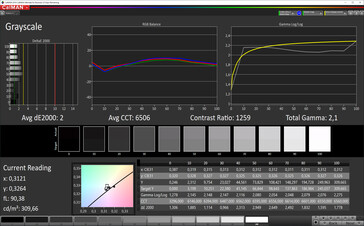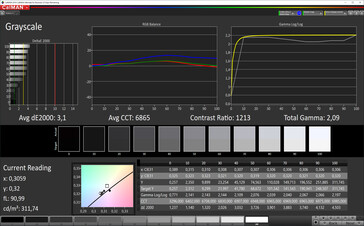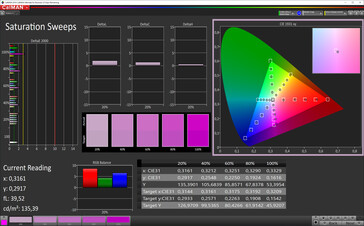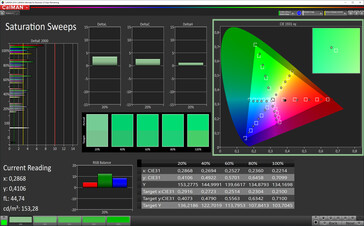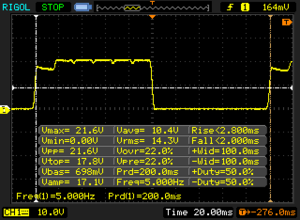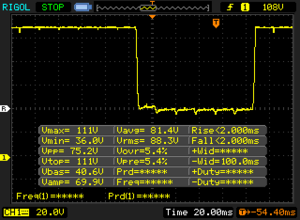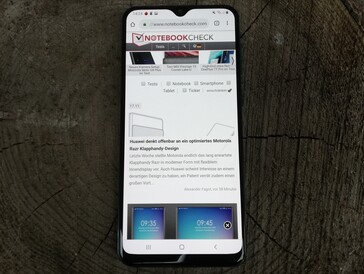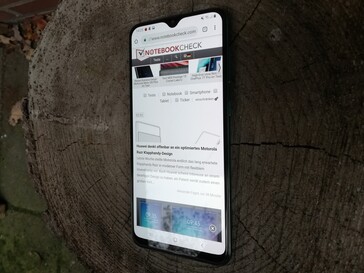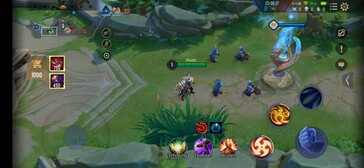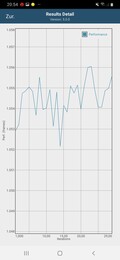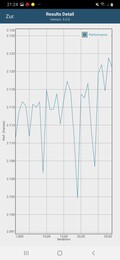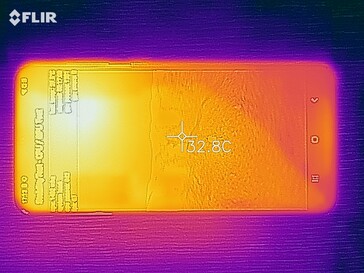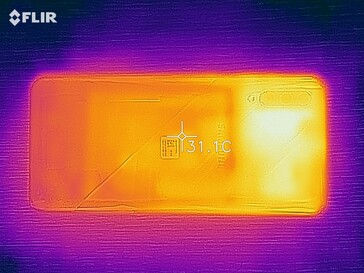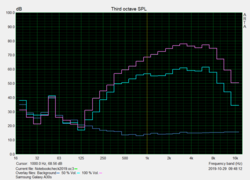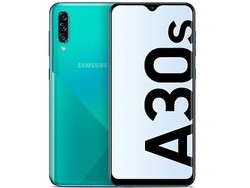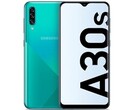Samsung Galaxy A30s Smartphone Review: A breath of fresh air with a playful design
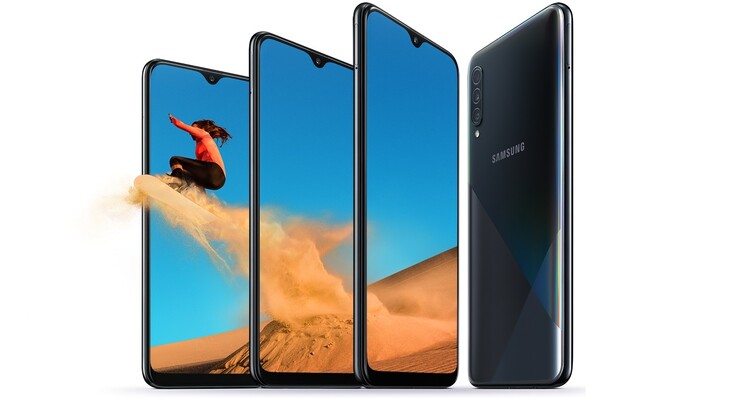
Samsung prices the Galaxy A30s in between the Galaxy A40 and the Galaxy A50; a tad confusing considering its name. Inside the A30s we find the Exynos 7904 and 4 GB of RAM, along with an ARM Mali-G71 MP2 GPU and 64 GB of internal storage. Samsung uses the same hardware in the Galaxy A40, but it has a noticeably smaller display than the A30s does.
We shall compare the A30s against comparably equipped smartphones, an overview of which you can find in the table below. Please note that you can add more smartphones from our database to each of the comparison tables in this review too.
Device comparison
Rating | Date | Model | Weight | Drive | Size | Resolution | Price |
|---|---|---|---|---|---|---|---|
| 79.2 % v7 (old) | 11 / 2019 | Samsung Galaxy A30s Exynos 7904, Mali-G71 MP2 | 166 g | 64 GB eMMC Flash | 6.40" | 1560x720 | |
| 79.1 % v7 (old) | 05 / 2019 | Samsung Galaxy A40 Exynos 7904, Mali-G71 MP2 | 140 g | 64 GB eMMC Flash | 5.90" | 2340x1080 | |
| 75.7 % v7 (old) | 11 / 2019 | Honor 9X Kirin 710, Mali-G51 MP4 | 197 g | 128 GB UFS 2.1 Flash | 6.59" | 2340x1080 | |
| 78.6 % v7 (old) | 11 / 2019 | Nokia 7.2 SD 660, Adreno 512 | 180 g | 64 GB eMMC Flash | 6.30" | 2340x1080 | |
| 77.3 % v7 (old) | 10 / 2019 | HTC Desire 19+ Helio P35 MT6765, PowerVR GE8320 | 170 g | 64 GB eMMC Flash | 6.20" | 1520x720 | |
| 78.3 % v7 (old) | 05 / 2019 | Huawei P30 Lite Kirin 710, Mali-G51 MP4 | 159 g | 128 GB eMMC Flash | 6.15" | 2312x1080 |
Case - Multiple colours and a modern design
The A30s has a metal frame, while our review unit feels expensive and is well-built. While metal frames are not always guaranteed on sub-300 Euro (~$330) smartphones, the most eye-catching area of the A30s is its back panel. Samsung has given the panel a gradient and prism-like finish, the likes of which we have not seen before.
Samsung currently sells the A30s in Prism Crush Green, the colour of our review unit, Prism Crush Black and Prism Crush White. Incidentally, the A30s is well-built and sturdy, with there being no flaws to the frame, back panel or display of our review unit. Its two hardware buttons sit firmly in place too.
The A30s is about as heavy and compact as the average of our comparison devices. The device weighs 166 g and measures 158.5 x 74.7 x 7.8 mm, which is what we would expect from a device with a 6.4-inch display.
Connectivity - An affordable smartphone with a few luxuries
The A30s has an Exynos 7904 SoC, 4 GB of RAM, an ARM Mali-G71 MP2 GPU and 64 GB of eMMC flash storage, as we mentioned earlier. The device supports dual-SIM functionality and microSD card expansion, with Samsung including dedicated slots for both. The A30s supports dual-SIM voice over LTE (VoLTE) and Wi-Fi calling (VoWiFi), although the device can only utilise either technology if your carrier supports the A30s on its network.
Samsung does not include a notification LED on the A30s, while its USB Type-C port operates on the older USB 2.0 standard. Moreover, it has a Limited Camera2 API. However, the A30s has DRM Widevine L1 certification, meaning that it can stream DRM-protected content from services like Amazon Prime and Netflix in HD. There is a 3.5 mm jack onboard too, which is always good to see.
Software - One UI 1.5 and outdated security patches
Samsung ships the A30s with One UI 1.5, its in-house version of Android 9.0 Pie. The South Korean company had released the August 1, 2019 set of security patches to our review unit at the time of testing in November, something that we also complained about in our recent Galaxy M30s review.
One UI 1.5 operates much like stock Android but has a few customisations and Samsung's suite of apps instead of Google's. The most noticeable difference between One UI and the version of Android that Google installs on its Pixel smartphones is the main settings menu, but it should only take a short period of acclimatisation for most people to get used to it. Samsung preinstalls a few third-party apps on the A30s too along with the Galaxy Store, its alternative to the Google Play Store. The A30s contains the latter too, though.
Communication & GPS - Bluetooth 5.0, NFC and slow Wi-Fi
The A30s supports all major GSM, 3G and LTE networks, while it utilises LTE Cat.10 for up to 450 Mb/s downloads and 100 Mb/s uploads. The device also supports Bluetooth 5.0 and NFC for near-field communications.
Samsung advertises the A30s as supporting the fast Wi-Fi 5 protocol, but our review unit achieved comparatively slow Wi-Fi transfer speeds in our iperf3 Client tests. As the tables below show, the A30s can only average 100 Mb/s when transmitting to and 122 Mb/s when receiving data from our Linksys EA8500 reference router. Only the HTC Desire 19+ averaged a lower transmission speed than our review unit did of our comparison devices. Additionally, the A30s received data between 28% and 65% slower than our comparison devices did.
| Networking | |
| iperf3 transmit AX12 | |
| Nokia 7.2 | |
| Samsung Galaxy A40 | |
| Huawei P30 Lite | |
| Honor 9X | |
| Samsung Galaxy A30s | |
| HTC Desire 19+ | |
| iperf3 receive AX12 | |
| Nokia 7.2 | |
| Samsung Galaxy A40 | |
| Huawei P30 Lite | |
| HTC Desire 19+ | |
| Honor 9X | |
| Samsung Galaxy A30s | |
The A30s uses BeiDou, Galileo, GLONASS, and GPS for location services, with which it can maintain a satellite fix to three metres. This only applies when using the device outdoors though, as our review unit could not locate us when we moved inside.
The device also took some noticeable deviations during our cycle ride, to which we subject all the smartphones and tablets we review. The A30s particularly struggled to keep up with us on long straights, but it plotted about as accurate of a route as our Garmin Edge 500 did when we were cycling around things. Overall, we would only recommend the A30s for simple navigation tasks.
Telephone Features & Call Quality - Loud enough for noisy environments, but lacking in quality
Samsung preinstalls its suite of telephony apps on the A30s instead of Google's. The default phone app operates like many others do, with it loading to a numeric keypad and sorting call history, stored contacts and favourites into tabs.
Our review unit has acceptable call quality, with its earpiece able to get loud enough to make and receive calls from noisy environments. Voices always remained intelligible during our test calls, but Samsung has tweaked the earpiece more for higher-pitched voices to our ears.
Cameras - Vibrant colours but faint details
The A30 has three rear-facing cameras and a single front-facing one. The primary of the former is a 25 MP sensor that has an f/1.7 aperture, which Samsung complements with a 5 MP depth sensor and an 8 MP ultra-wide camera that both have f/2.2 apertures. Meanwhile, there is a 16 MP camera up front with an f/2.0 aperture.
The latter takes vibrant-looking portraits but at the expense of preserving detail. As the selfie to the right demonstrates, the sensor struggles to reproduce fine structures and details, while objects are poorly delineated from each other too.
While the default camera app does not include a pro or manual mode for the front-facing camera, there are a host of other options from which to choose. Samsung includes several filters and beautification modes, for example, along with options for adjusting the resolution, HDR, and the intensity of the bokeh effect that the device applies to shots.
The primary rear-facing sensor struggles in the same areas that the front-facing one does. While the 25 MP camera reproduces objects and panoramic scenes well, the edges of objects and textures lack clarity. Colours always look vivid, though.
The A30s handles macro photos better, with its 25 MP sensor able to capture more details than when in general shots. The edges of objects are more distinguishable too, while blurriness only sets in at high zoom levels. On the other hand, the primary camera struggles in low-light conditions, as scene 3 demonstrates below. The sensor captures hardly any details and underexposes the whole scene, while image noise dominates too.
The default camera app includes a pro mode for the rear-facing sensors though, including those we described above. The pro mode contains options for adjusting the ISO, white balance and brightness.
The A30s can record videos in up to 2336x1080, or in 1440x1440 for square videos. The default camera app does not have a slow-motion mode or any equivalents, though. Overall, the image quality of our test videos is on par with that of our test photos. The primary camera has an image stabiliser to compensate against small camera shakes, but sensors are optically stabilised.
We also subjected our review unit to further tests under controlled lighting conditions, the results of which you can view below. Our tests determine that the primary rear-facing sensor reproduces colours more brightly than it should, although it struggles to pick out any at 1 lux.
As expected, our test chart also looks overexposed under controlled light conditions, but the A30s preserves fine details and textures. Contrast levels drop off slightly in the lower corners of our test image, but this is often the case even with flagship smartphones. Our test chart is almost unrecognisable at 1 lux too.


Accessories & Warranty - All the essentials and a 24-month warranty
Samsung includes a modular USB charger, a matching Type-C cable, and a pair of headphones in the box. There is a tool for opening the card slot too, along with the usual set of warranty guidelines. Samsung sells other accessories like power banks, cables and headphones on its website too.
The A30s comes with a 24-month limited manufacturer's warranty. Please see our Guarantees, Return Policies & Warranties FAQ for country-specific information.
Input Devices & Operation - Reliable Touchscreen
Samsung preinstalls its in-house keyboard on the A30s, as it does for all its smartphones. The app functions like Google Gboard or SwiftKey do, with options for customising its layout or size. The touchscreen in our review unit reliably reproduced our inputs without delay during our tests, but the display has a slightly resistive finish to it that makes drag-and-drop movements a chore after a while. The accelerometer consistently adjusted the orientation of the screen correctly and quickly throughout our tests too.
You can secure the A30s with a password, pattern, PIN or a fingerprint. The latter is registered using a sensor that sits underneath the display, as opposed to a capacitive one to which you may have become accustomed. While having the sensor underneath the display may seem futuristic, the one in our review unit cannot recognise stored fingerprints as accurately as a traditional capacitive sensor can. The sensor will only accept our thumb if we place it at just the right angle, for instance.
Display - A vibrant, bright, and low-resolution SuperAMOLED panel
The A30s has a 6.4-inch SuperAMOLED panel that resolves natively at 1560x720. While all but one of our comparison devices have 1080p displays compared to the 720p in the A30s, our review unit achieved the second-highest maximum average brightness of the devices in our comparison table. While X-Rite i1Pro 2 claims that the display reaches 489 cd/m², the more practical APL50 test states that it reaches 607 cd/m². This only applies when the ambient light sensor is activated though, as peak luminosity drops to just 306 cd/m² on manual brightness. The panel can also dim as low as 4.42 cd/m² and is 93% evenly lit.
We also recorded the display flickering at 240 Hz, a frequency that can cause health issues like eyestrain and headaches for those who are sensitive to pulse-width modulation (PWM). Hence, we would recommend trying the A30s before buying it if you are PWM sensitive.
| |||||||||||||||||||||||||
Brightness Distribution: 93 %
Center on Battery: 488 cd/m²
Contrast: ∞:1 (Black: 0 cd/m²)
ΔE ColorChecker Calman: 1.7 | ∀{0.5-29.43 Ø4.78}
ΔE Greyscale Calman: 2 | ∀{0.09-98 Ø5}
98% sRGB (Calman 2D)
Gamma: 2.1
CCT: 6506 K
| Samsung Galaxy A30s Super AMOLED, 1560x720, 6.4" | Samsung Galaxy A40 Super AMOLED, 2340x1080, 5.9" | Honor 9X LCD IPS, 2340x1080, 6.6" | Nokia 7.2 IPS, 2340x1080, 6.3" | HTC Desire 19+ IPS, 1520x720, 6.2" | Huawei P30 Lite IPS LCD, 2312x1080, 6.2" | |
|---|---|---|---|---|---|---|
| Screen | -127% | -119% | -98% | -72% | -11% | |
| Brightness middle (cd/m²) | 488 | 358 -27% | 494 1% | 604 24% | 491 1% | 451 -8% |
| Brightness (cd/m²) | 489 | 370 -24% | 483 -1% | 593 21% | 470 -4% | 430 -12% |
| Brightness Distribution (%) | 93 | 94 1% | 94 1% | 92 -1% | 84 -10% | 90 -3% |
| Black Level * (cd/m²) | 0.51 | 0.4 | 0.33 | 0.55 | ||
| Colorchecker dE 2000 * | 1.7 | 7.4 -335% | 5.74 -238% | 5.1 -200% | 4.34 -155% | 1.4 18% |
| Colorchecker dE 2000 max. * | 3.3 | 12.5 -279% | 10.26 -211% | 10.3 -212% | 8.17 -148% | 4.4 -33% |
| Greyscale dE 2000 * | 2 | 4 -100% | 7.3 -265% | 6.4 -220% | 4.3 -115% | 2.5 -25% |
| Gamma | 2.1 105% | 2.084 106% | 2.086 105% | 2.23 99% | 2.302 96% | 2.22 99% |
| CCT | 6506 100% | 7078 92% | 8572 76% | 8149 80% | 7214 90% | 6422 101% |
| Contrast (:1) | 969 | 1510 | 1488 | 820 |
* ... smaller is better
Screen Flickering / PWM (Pulse-Width Modulation)
| Screen flickering / PWM detected | 240.4 Hz | ≤ 99 % brightness setting | |
The display backlight flickers at 240.4 Hz (worst case, e.g., utilizing PWM) Flickering detected at a brightness setting of 99 % and below. There should be no flickering or PWM above this brightness setting. The frequency of 240.4 Hz is relatively low, so sensitive users will likely notice flickering and experience eyestrain at the stated brightness setting and below. In comparison: 53 % of all tested devices do not use PWM to dim the display. If PWM was detected, an average of 8111 (minimum: 5 - maximum: 343500) Hz was measured. | |||
A benefit of AMOLED panels is their ability to disable pixels individually. This allows them to use switched-off pixels to reproduce the colour black, giving the A30s and all other AMOLED-equipped devices theoretically infinite contrast ratios and 0 cd/m² black levels. Expectedly, our review unit demarcates colours well from each other, while blacks look deep and full.
However, the display can make colours a bit pale depending on the mode to which it is set. Samsung leaves the display on Natural by default, which CalMAN confirms has a balanced colour reproduction with only slight variations from the sRGB colour space. On the other hand, while the Vivid mode makes colours look more vivid, it also increases the proportion of blue that the display reproduces. Not only does this skew colour accuracy, but it also gives the panel a blue tint. You can manually alter the white balance to offset this, though. Alternatively, you can choose between warmer or cooler colours if you do not want to set tweak red, yellow and blue levels.
Display Response Times
| ↔ Response Time Black to White | ||
|---|---|---|
| 4 ms ... rise ↗ and fall ↘ combined | ↗ 2 ms rise | |
| ↘ 2 ms fall | ||
| The screen shows very fast response rates in our tests and should be very well suited for fast-paced gaming. In comparison, all tested devices range from 0.1 (minimum) to 240 (maximum) ms. » 15 % of all devices are better. This means that the measured response time is better than the average of all tested devices (20.2 ms). | ||
| ↔ Response Time 50% Grey to 80% Grey | ||
| 4 ms ... rise ↗ and fall ↘ combined | ↗ 2 ms rise | |
| ↘ 2 ms fall | ||
| The screen shows very fast response rates in our tests and should be very well suited for fast-paced gaming. In comparison, all tested devices range from 0.165 (minimum) to 636 (maximum) ms. » 14 % of all devices are better. This means that the measured response time is better than the average of all tested devices (31.6 ms). | ||
We had no issues with using the A30s outside thanks to its bright and vivid SuperAMOLED. The display glass also catches the light less than comparable smartphones, so you should notice fewer reflections when using the A30s outside on a sunny day. Reflections will obscure the display slightly, though.
Performance - Enough for everyday use
The A30s is best suited for those who do not demand much from their smartphones. Its hardware can handle all daily apps and tasks smoothly, while most games should be playable at medium graphics settings. We also encountered no stuttering or system issues during our time with the device.
Our review unit generally finished in the midfield of our synthetic benchmark comparison tables and on par with the identically equipped Galaxy A40. The Honor 9X and Huawei P30 Lite have the edge over the A30s in most tasks though, as the Nokia 7.2 does in GPU-heavy benchmarks.
| PCMark for Android | |
| Work performance score (sort by value) | |
| Samsung Galaxy A30s | |
| Samsung Galaxy A40 | |
| Honor 9X | |
| HTC Desire 19+ | |
| Huawei P30 Lite | |
| Average Samsung Exynos 7904 (5802 - 6923, n=4) | |
| Work 2.0 performance score (sort by value) | |
| Samsung Galaxy A30s | |
| Samsung Galaxy A40 | |
| Honor 9X | |
| Nokia 7.2 | |
| HTC Desire 19+ | |
| Huawei P30 Lite | |
| Average Samsung Exynos 7904 (5269 - 5474, n=4) | |
| GFXBench 3.0 | |
| on screen Manhattan Onscreen OGL (sort by value) | |
| Samsung Galaxy A30s | |
| Samsung Galaxy A40 | |
| Honor 9X | |
| Nokia 7.2 | |
| Huawei P30 Lite | |
| Average Samsung Exynos 7904 (6.2 - 24, n=4) | |
| Average of class Smartphone (18 - 166, n=158, last 2 years) | |
| 1920x1080 1080p Manhattan Offscreen (sort by value) | |
| Samsung Galaxy A30s | |
| Samsung Galaxy A40 | |
| Honor 9X | |
| Nokia 7.2 | |
| Huawei P30 Lite | |
| Average Samsung Exynos 7904 (7 - 13, n=4) | |
| Average of class Smartphone (12 - 606, n=157, last 2 years) | |
| GFXBench 3.1 | |
| on screen Manhattan ES 3.1 Onscreen (sort by value) | |
| Samsung Galaxy A30s | |
| Samsung Galaxy A40 | |
| Honor 9X | |
| Nokia 7.2 | |
| Huawei P30 Lite | |
| Average Samsung Exynos 7904 (3.8 - 17, n=4) | |
| Average of class Smartphone (11 - 166, n=158, last 2 years) | |
| 1920x1080 Manhattan ES 3.1 Offscreen (sort by value) | |
| Samsung Galaxy A30s | |
| Samsung Galaxy A40 | |
| Honor 9X | |
| Nokia 7.2 | |
| Huawei P30 Lite | |
| Average Samsung Exynos 7904 (4.3 - 8.1, n=4) | |
| Average of class Smartphone (8.4 - 413, n=157, last 2 years) | |
| AnTuTu v8 - Total Score (sort by value) | |
| Samsung Galaxy A30s | |
| Nokia 7.2 | |
| Average Samsung Exynos 7904 (n=1) | |
| AnTuTu v7 - Total Score (sort by value) | |
| Samsung Galaxy A30s | |
| Samsung Galaxy A40 | |
| Honor 9X | |
| Huawei P30 Lite | |
| Average Samsung Exynos 7904 (101367 - 109906, n=4) | |
| AnTuTu v6 - Total Score (sort by value) | |
| Samsung Galaxy A40 | |
| Huawei P30 Lite | |
| Average Samsung Exynos 7904 (71303 - 75333, n=2) | |
Our browser benchmarks show a similar picture. Again, the A30s and Galaxy A40 scored similarly and finished behind all our other comparison devices.
Our review unit loaded websites quickly during our tests, so do not let its middling benchmark performance put you off. The handset even loaded media content promptly.
| Jetstream 2 - 2.0 Total Score | |
| Average of class Smartphone (23.8 - 387, n=153, last 2 years) | |
| Honor 9X (Chrome 78) | |
| Huawei P30 Lite (Chrome 74) | |
| Samsung Galaxy A30s (Chrome 78) | |
| Average Samsung Exynos 7904 (22.1 - 25.7, n=4) | |
| Samsung Galaxy A40 (Chrome 73) | |
| JetStream 1.1 - Total Score | |
| Huawei P30 Lite (Chrome 74) | |
| Average Samsung Exynos 7904 (42.2 - 45.1, n=4) | |
| Samsung Galaxy A40 (Chrome 73) | |
| Samsung Galaxy A30s (Chrome 78) | |
| Speedometer 2.0 - Result 2.0 | |
| Average of class Smartphone (15.2 - 643, n=128, last 2 years) | |
| Honor 9X (Chrome 78) | |
| Huawei P30 Lite (Chrome 74) | |
| Samsung Galaxy A40 (Chrome 73) | |
| Samsung Galaxy A30s (Chrome 78) | |
| Average Samsung Exynos 7904 (19.3 - 24.1, n=4) | |
| WebXPRT 3 - Overall | |
| Average of class Smartphone (38 - 380, n=35, last 2 years) | |
| Huawei P30 Lite (Chrome 74) | |
| Samsung Galaxy A40 (Chrome 73) | |
| Average Samsung Exynos 7904 (43 - 56, n=4) | |
| Samsung Galaxy A30s (Chrome 78) | |
| Octane V2 - Total Score | |
| Average of class Smartphone (2228 - 121337, n=200, last 2 years) | |
| Honor 9X (Chrome 78) | |
| Huawei P30 Lite (Chrome 74) | |
| Average Samsung Exynos 7904 (7798 - 9087, n=4) | |
| Samsung Galaxy A30s (Chrome 78) | |
| Samsung Galaxy A40 (Chrome 73) | |
| Mozilla Kraken 1.1 - Total | |
| Samsung Galaxy A30s (Chrome 78) | |
| Samsung Galaxy A40 (Chrome 73) | |
| Average Samsung Exynos 7904 (3703 - 5707, n=4) | |
| Huawei P30 Lite (Chrome 74) | |
| Honor 9X (Chrome 78) | |
| Average of class Smartphone (257 - 28190, n=155, last 2 years) | |
* ... smaller is better
Unsurprisingly, the A30s reaches the level of the Galaxy A40 in storage benchmarks too. Moreover, both devices fall short of the transfer speeds that our other comparison devices achieved in AndroBench. Both outperform the class average, though.
The A30s performed comparatively better in microSD card benchmarks, but it is still a few percent off our fastest comparison devices. Only the Galaxy A40 beats the A30s in both AndroBench tests, though. Please keep in mind that the A30s does not support apps being stored on expandable storage, nor can it format microSD cards as internal storage.
| Samsung Galaxy A30s | Samsung Galaxy A40 | Honor 9X | Nokia 7.2 | HTC Desire 19+ | Huawei P30 Lite | Average 64 GB eMMC Flash | Average of class Smartphone | |
|---|---|---|---|---|---|---|---|---|
| AndroBench 3-5 | -4% | 231% | 7% | 22% | 94% | 28% | 1222% | |
| Sequential Read 256KB (MB/s) | 291.8 | 295 1% | 860 195% | 290.8 0% | 288 -1% | 293.2 0% | 277 ? -5% | 2223 ? 662% |
| Sequential Write 256KB (MB/s) | 101.7 | 99.6 -2% | 196.1 93% | 161.4 59% | 210.8 107% | 158.6 56% | 178.4 ? 75% | 1838 ? 1707% |
| Random Read 4KB (MB/s) | 93.2 | 75.7 -19% | 142.3 53% | 79.6 -15% | 76.5 -18% | 71.6 -23% | 60.7 ? -35% | 295 ? 217% |
| Random Write 4KB (MB/s) | 13.95 | 13.2 -5% | 159.3 1042% | 13.38 -4% | 20.4 46% | 87.3 526% | 33.8 ? 142% | 335 ? 2301% |
| Sequential Read 256KB SDCard (MB/s) | 80 ? | 81.2 ? 2% | 76.2 ? -5% | 83.3 ? 4% | 81.8 ? 2% | 76.8 ? -4% | 77.4 ? -3% | |
| Sequential Write 256KB SDCard (MB/s) | 64 ? | 65.2 ? 2% | 67.1 ? 5% | 64 ? 0% | 61.8 ? -3% | 67.8 ? 6% | 58.3 ? -9% |
Games - Casual games or low graphics only
The ARM Mali-G71 MP2 is powerful enough to play games with moderate graphics demands. While our review unit had no issues with running Arena of Valor at high graphics, it could only average 27.8 FPS in Asphalt 9: Legends at low graphics.
Incidentally, the touchscreen and associated sensors worked perfectly during our gaming tests.
Arena of Valor
Asphalt 9: Legends
Emissions - A loud speaker and low surface temperatures
Temperature
Our measurements certify that the A30s only reaches a maximum of 27.9 °C when idling and 31.8 °C under load. These are only the hottest areas of the device too, with our review unit averaging just 29.2 °C under sustained load. Hence, the A30s should never feel too hot to hold even after prolonged gaming sessions.
We also subjected the A30s to a series of GFXBench benchmarks to assess how well it fares under sustained load. The device maintained consistent frame rates throughout both benchmarks that we ran, so you should encounter no throttling when gaming or in other demanding tasks.
(+) The maximum temperature on the upper side is 30.9 °C / 88 F, compared to the average of 35.2 °C / 95 F, ranging from 21.9 to 247 °C for the class Smartphone.
(+) The bottom heats up to a maximum of 31.8 °C / 89 F, compared to the average of 34 °C / 93 F
(+) In idle usage, the average temperature for the upper side is 27.3 °C / 81 F, compared to the device average of 32.9 °C / 91 F.
Speakers
The speakers in our review unit get comparatively loud. High-pitched frequencies dominate somewhat, making the A30s better suited for playing back speech than music.
We would recommend using external audio equipment like external speakers or headphones for consuming most media content. These can be connected either via the 3.5 mm headphone jack or Bluetooth. The former holds headphones firmly in place, while both reproduced audio cleanly during our tests.
Samsung Galaxy A30s audio analysis
(+) | speakers can play relatively loud (86.2 dB)
Bass 100 - 315 Hz
(-) | nearly no bass - on average 31.5% lower than median
(±) | linearity of bass is average (11.5% delta to prev. frequency)
Mids 400 - 2000 Hz
(±) | higher mids - on average 5.2% higher than median
(+) | mids are linear (6.4% delta to prev. frequency)
Highs 2 - 16 kHz
(±) | higher highs - on average 9.4% higher than median
(+) | highs are linear (5.1% delta to prev. frequency)
Overall 100 - 16.000 Hz
(±) | linearity of overall sound is average (27.2% difference to median)
Compared to same class
» 70% of all tested devices in this class were better, 6% similar, 25% worse
» The best had a delta of 11%, average was 35%, worst was 134%
Compared to all devices tested
» 83% of all tested devices were better, 4% similar, 14% worse
» The best had a delta of 4%, average was 24%, worst was 134%
Huawei P30 Lite audio analysis
(+) | speakers can play relatively loud (88.9 dB)
Bass 100 - 315 Hz
(-) | nearly no bass - on average 28% lower than median
(±) | linearity of bass is average (11.8% delta to prev. frequency)
Mids 400 - 2000 Hz
(±) | reduced mids - on average 5.8% lower than median
(+) | mids are linear (4.4% delta to prev. frequency)
Highs 2 - 16 kHz
(±) | higher highs - on average 8.1% higher than median
(+) | highs are linear (1.7% delta to prev. frequency)
Overall 100 - 16.000 Hz
(±) | linearity of overall sound is average (22.1% difference to median)
Compared to same class
» 46% of all tested devices in this class were better, 7% similar, 47% worse
» The best had a delta of 11%, average was 35%, worst was 134%
Compared to all devices tested
» 63% of all tested devices were better, 6% similar, 31% worse
» The best had a delta of 4%, average was 24%, worst was 134%
Power Management - Shorter than expected battery life
Power Consumption
Our review unit consumed between 0.79 and 3.68 W during our tests, making it more efficient than all our comparison devices, the class average and the average of Exynos 7904-powered devices that we have tested. Samsung includes a 15 W charger in the box, which is powerful enough to always keep the device charging.
| Off / Standby | |
| Idle | |
| Load |
|
Key:
min: | |
| Samsung Galaxy A30s 4000 mAh | Samsung Galaxy A40 3100 mAh | Honor 9X 4000 mAh | Nokia 7.2 3500 mAh | HTC Desire 19+ 3850 mAh | Huawei P30 Lite 3340 mAh | Average Samsung Exynos 7904 | Average of class Smartphone | |
|---|---|---|---|---|---|---|---|---|
| Power Consumption | -66% | -126% | -52% | -39% | -51% | -60% | -72% | |
| Idle Minimum * (Watt) | 0.79 | 0.8 -1% | 2.3 -191% | 0.77 3% | 1.3 -65% | 0.91 -15% | 1.048 ? -33% | 0.848 ? -7% |
| Idle Average * (Watt) | 1.98 | 1.4 29% | 3 -52% | 2.32 -17% | 2 -1% | 2.41 -22% | 2.51 ? -27% | 1.435 ? 28% |
| Idle Maximum * (Watt) | 2.03 | 2.3 -13% | 4.2 -107% | 2.41 -19% | 2.9 -43% | 2.43 -20% | 2.8 ? -38% | 1.62 ? 20% |
| Load Average * (Watt) | 2.37 | 7.4 -212% | 5.3 -124% | 4.44 -87% | 3.6 -52% | 4.57 -93% | 5.28 ? -123% | 7 ? -195% |
| Load Maximum * (Watt) | 3.68 | 8.6 -134% | 9.4 -155% | 8.79 -139% | 5 -36% | 7.57 -106% | 6.61 ? -80% | 11.3 ? -207% |
* ... smaller is better
Battery Life
Samsung equips the A30s with a 4,000 mAh battery, which lasted for 10:34 hours in our practical Wi-Fi test. This value is not bad, but many of our comparison devices achieve comparable or better runtimes with smaller batteries.
Our review unit takes around two hours to reach full charge with its included charger.
| Samsung Galaxy A30s 4000 mAh | Samsung Galaxy A40 3100 mAh | Honor 9X 4000 mAh | Nokia 7.2 3500 mAh | HTC Desire 19+ 3850 mAh | Huawei P30 Lite 3340 mAh | |
|---|---|---|---|---|---|---|
| Battery runtime | -9% | 31% | -10% | 25% | -29% | |
| H.264 (h) | 16.4 | 13.8 -16% | 11.4 -30% | |||
| WiFi v1.3 (h) | 10.6 | 10.7 1% | 13.9 31% | 9.5 -10% | 13.3 25% | 8.6 -19% |
| Load (h) | 5.3 | 4.6 -13% | 3.3 -38% | |||
| Reader / Idle (h) | 28.2 | 20.8 |
Pros
Cons
Verdict - A stylish smartphone with a few downsides
The Galaxy A30s is a decent entry-level smartphone that Samsung has priced appropriately. Its SuperAMOLED panel is colour accurate and bright, although its 720p resolution is rather low by today's standards. The Exynos 7904 is powerful enough for all everyday tasks too and even some gaming. Complex titles like Asphalt 9: Legends will push the A30s to its limits, though.
The Samsung Galaxy A30s fulfils our expectations considering its price. We would only ask for longer battery life.
Samsung has left some battery life optimisations on the table, in our opinion. While the A30s achieved respectable runtimes during our tests, many of our comparison devices lasted longer with smaller batteries. The sluggish in-screen fingerprint sensor is a miss too, as is the comparatively slow Wi-Fi performance. Overall, these are minor detractions from what is an accomplished entry-level smartphone.
Samsung Galaxy A30s
- 08/31/2022 v7 (old)
Mike Wobker




